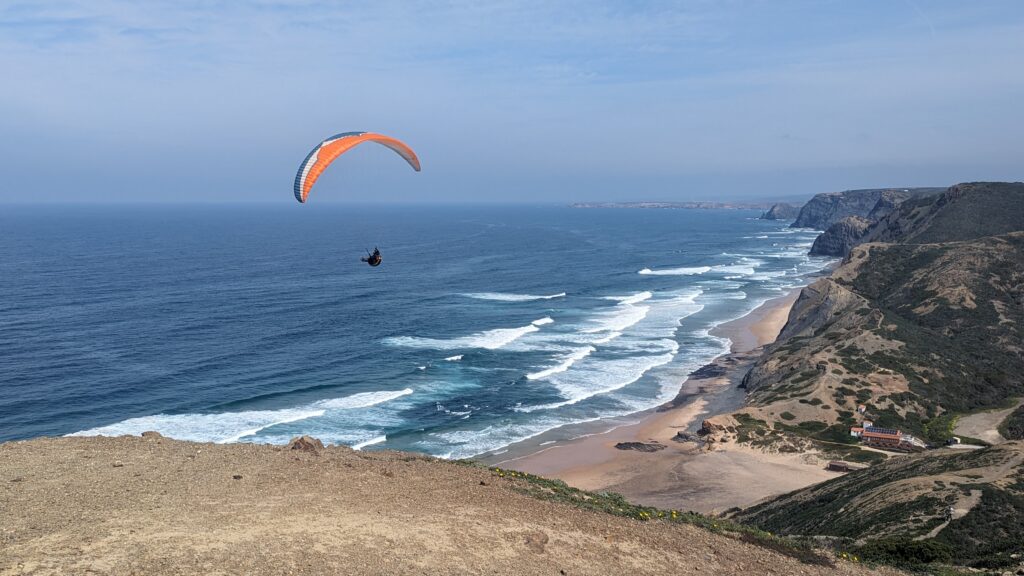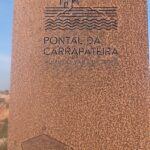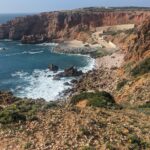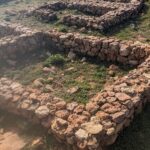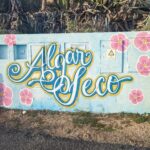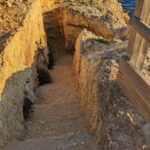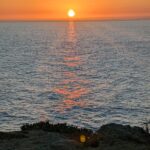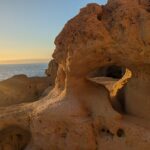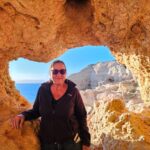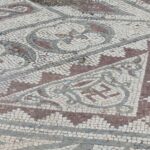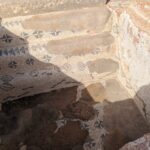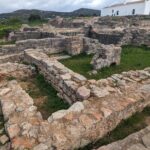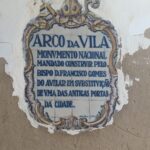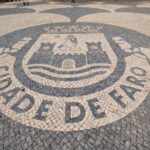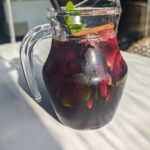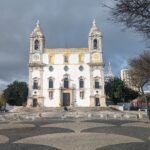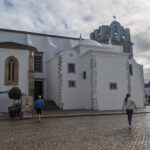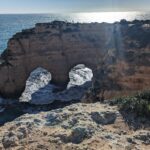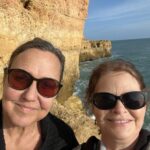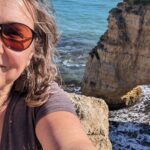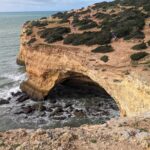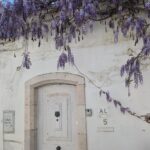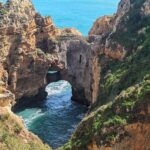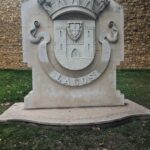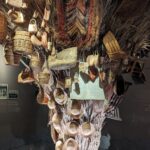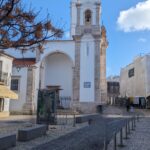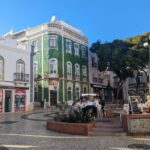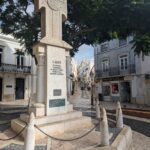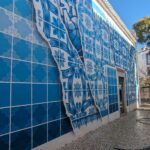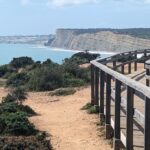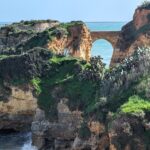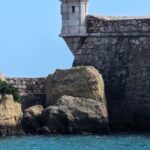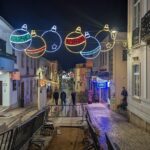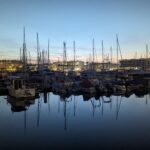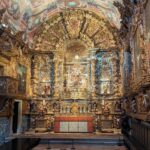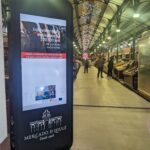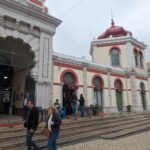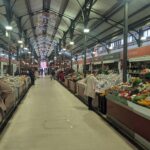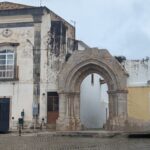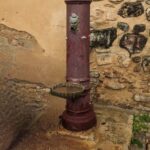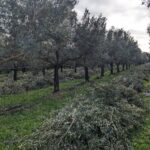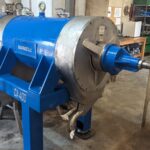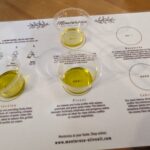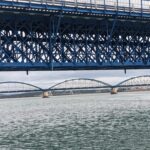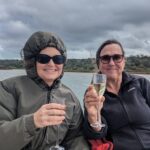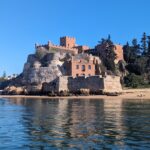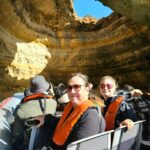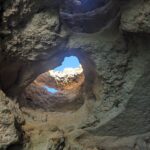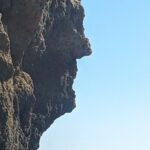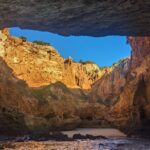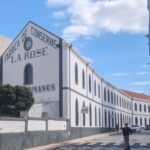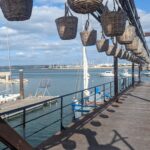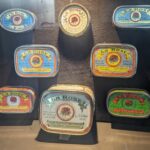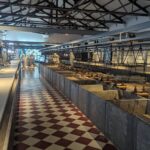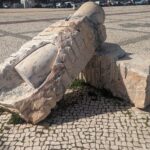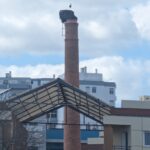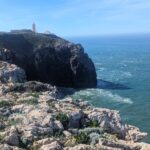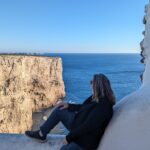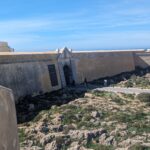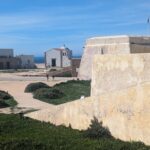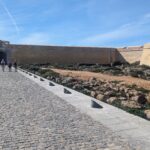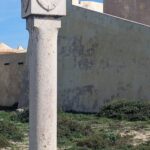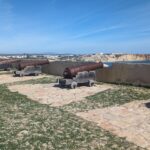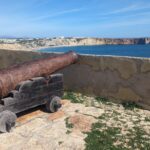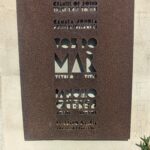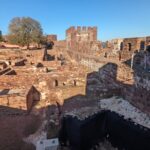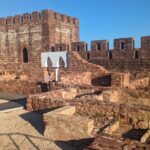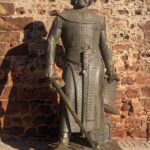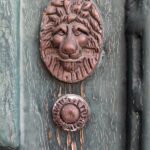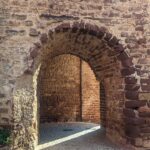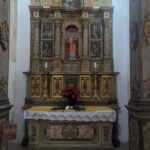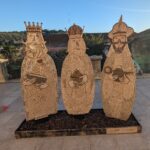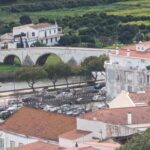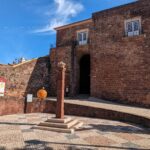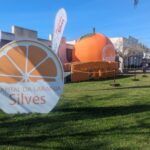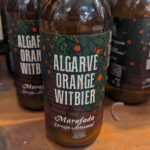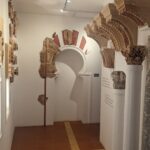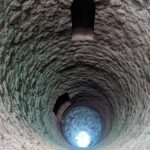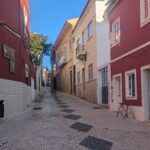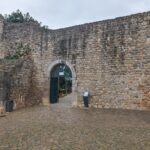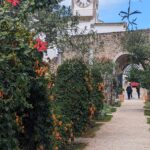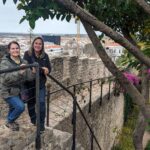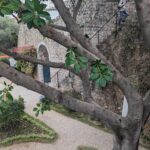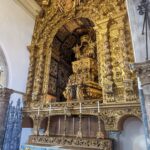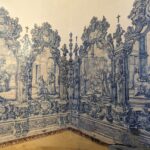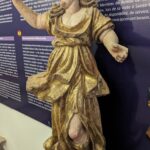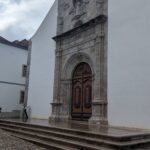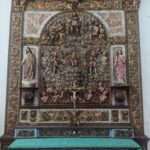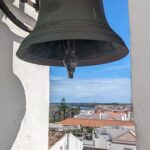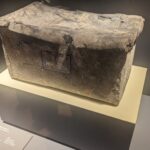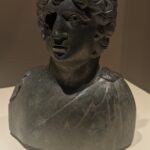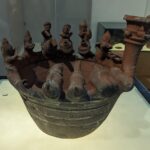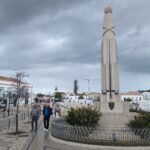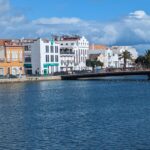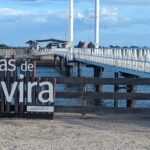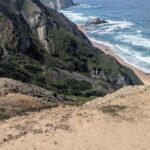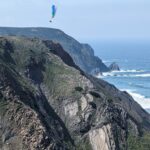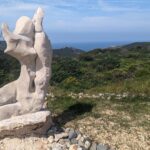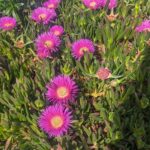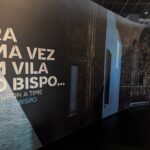
Exploring the Algarve
There are so many wonderful towns to explore in the Algarve, as well as magnificent trails, rugged coasts, parks, and beautiful beaches. Here are some of my favorites sites and activities.
I feel quite lucky to live here and have time to explore little towns and search out new sites. I will continue to add sites as I explore.
Carrapateira
- Islamic Settlement of Ponta do Castelo an archeological site and ruins of an Islamic fishing village from the 12th-13th c. Excavated in 2001.
- Pontal da Carrapateira a beautiful drive, with multiple viewpoints and boardwalk areas on the west coast.
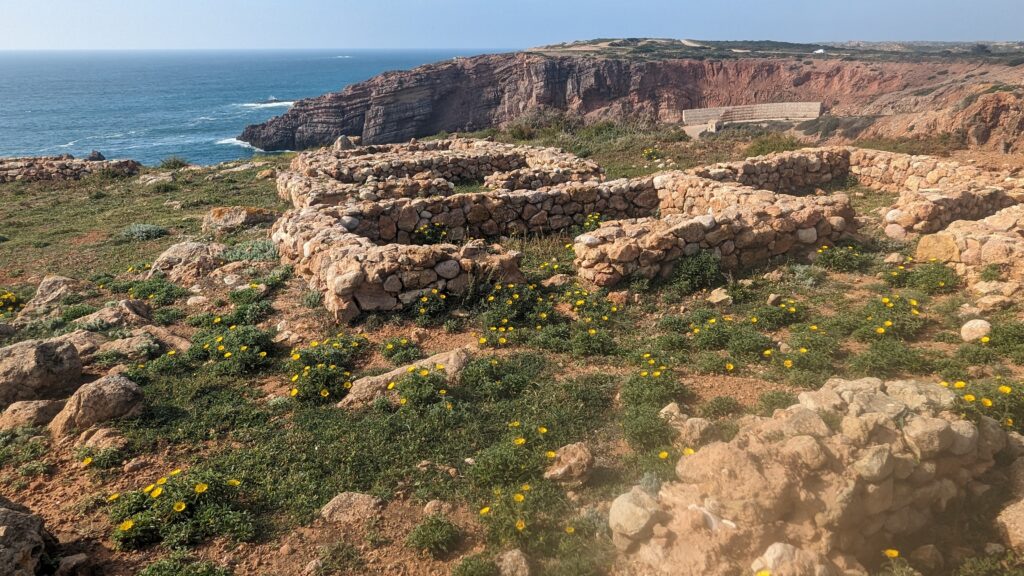
Carvoeiro
- Algar Seco has lovely trails along the boardwalk. There are some areas where you can go down to the rocks through tunnels for fantastic views.
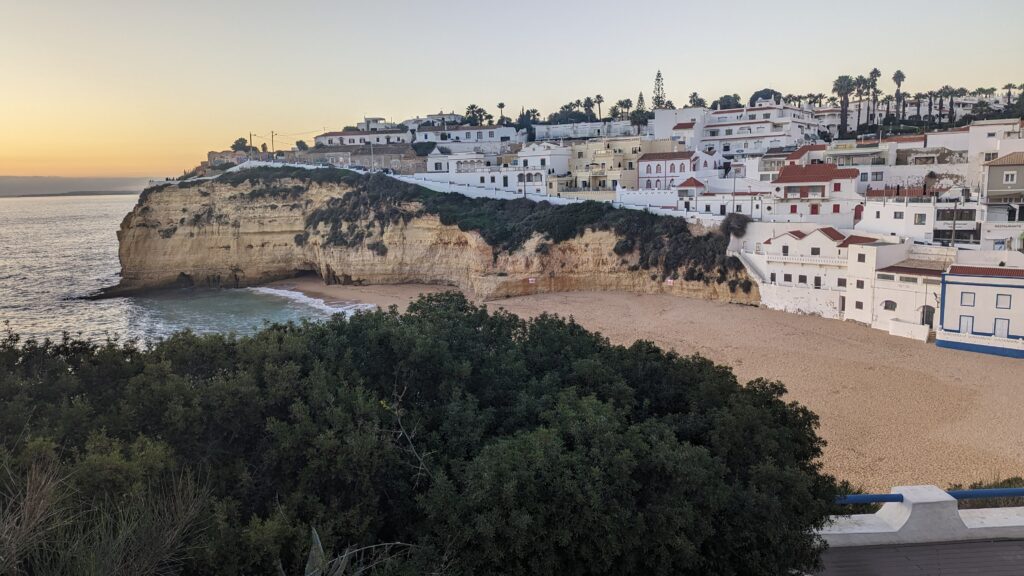
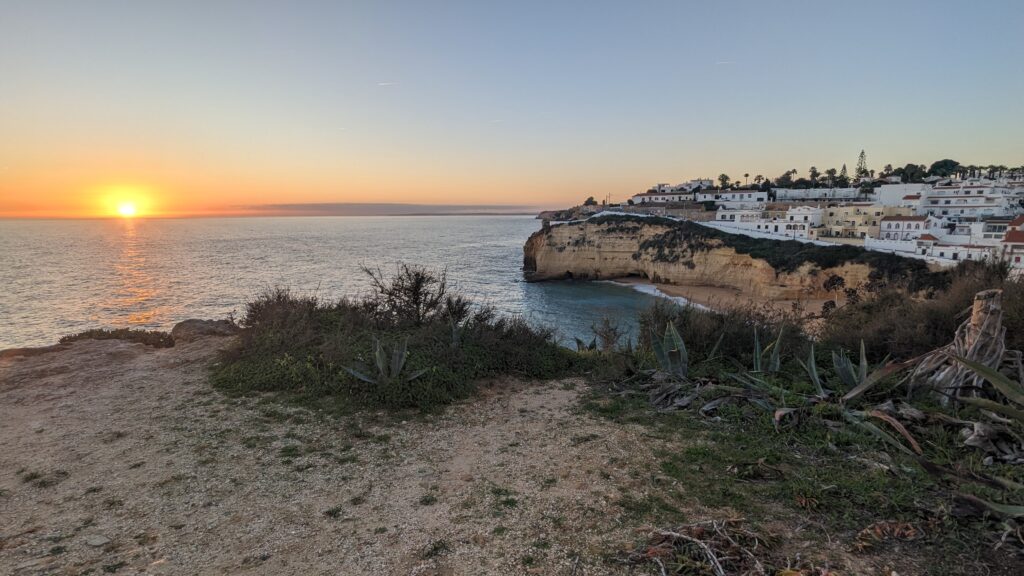
Estoi
- Roman Ruins of Milreau. North of Faro. Built between the 1st and 4th c. AD, abandoned in the 10th c., there are wonderful murals, baths, and the ruins of the temple. Discovered in 1877. Only €2.00, these are well worth making a special trip to see, quite an amazing site.
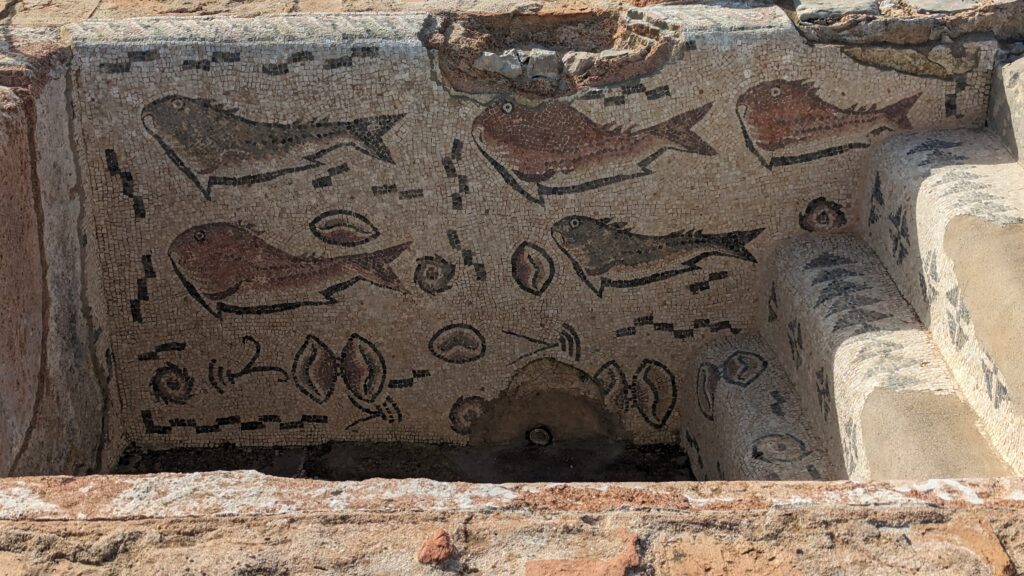
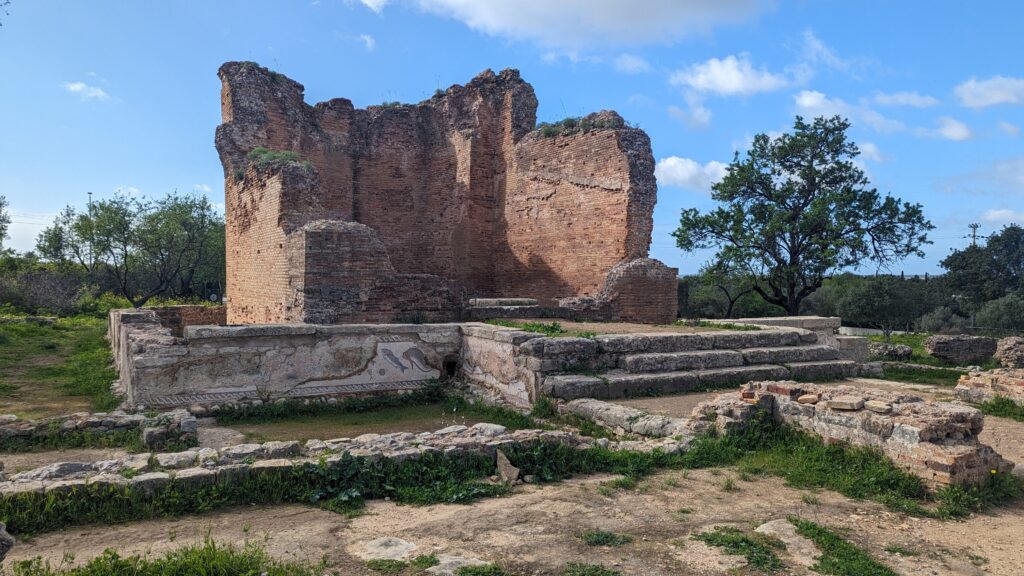
Faro
- Arco da Vila and Arco da Rua Monsenhor Boto are a couple of the gates leading into Old Town, close to the Santa Maria church.
- Igreja de Santa Maria, a gorgeous 16th c. church.
- Igreja Nossa Senhora do Monte do Carmo, another beautiful 17th c. church with a chapel of bones added in the 18th c. €2.00
- Old Town all of the walled city, wander through to see Santa Maria, the city gates and the museum.
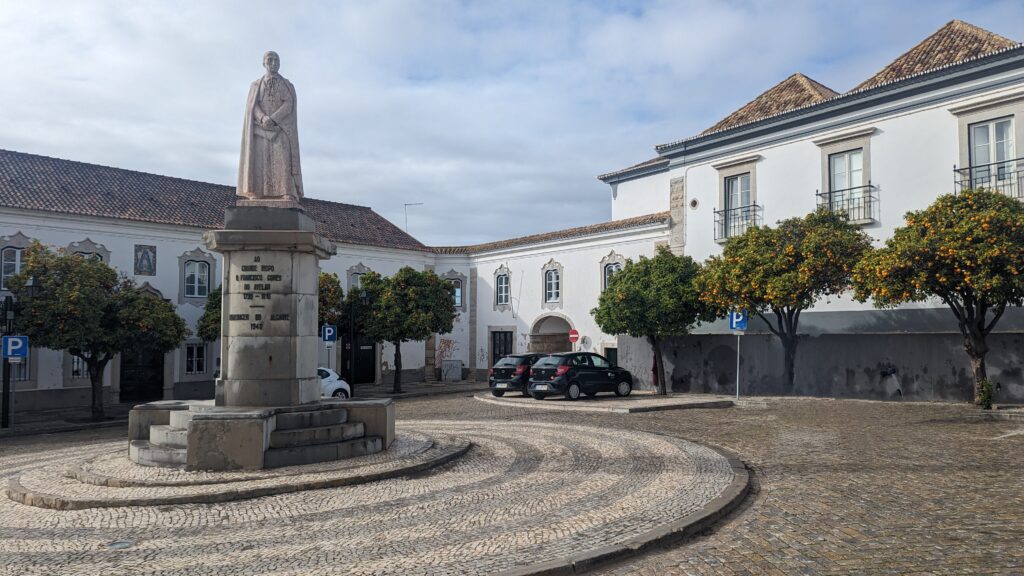
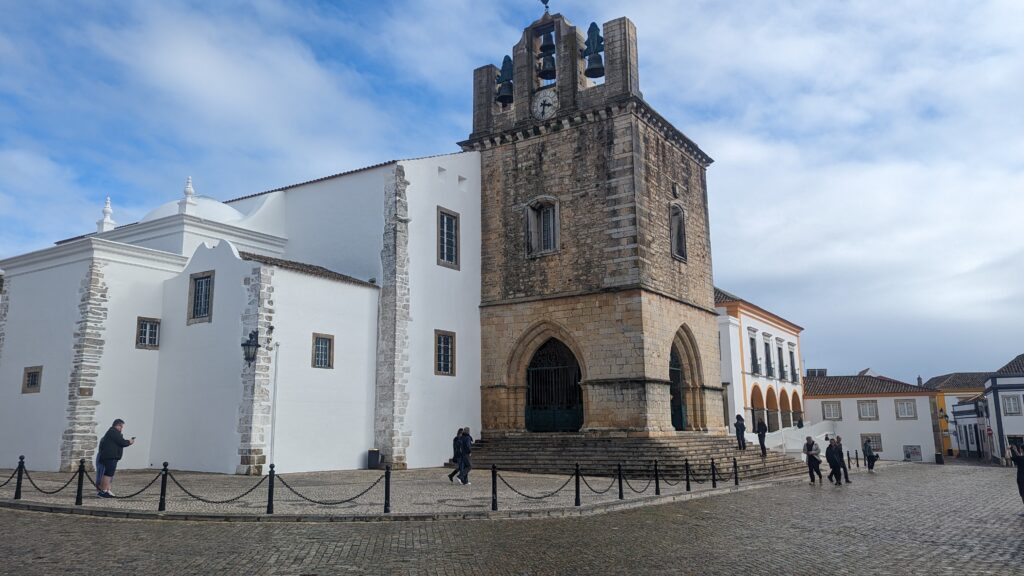
Lagoa
- Marinha Beach, one end of the Seven Hanging Valleys trail, but also just a beautiful beach. Easy parking here to visit the beach or start the trail. If you enter “Benagil cave” or “elephant rock” you can find other parking along the route.
- Seven Hanging Valleys Trail. You can see the Elephant Rock or, from the just right spot on the cliffs, the “heart shaped rock”. This is actually two parts of the cliff, that you have to view in just the right spot. You also can see Benagil Cave from above. The hike can be strenuous in parts. Wear very good shoes, it’s rocky and hilly but worth the time and effort.
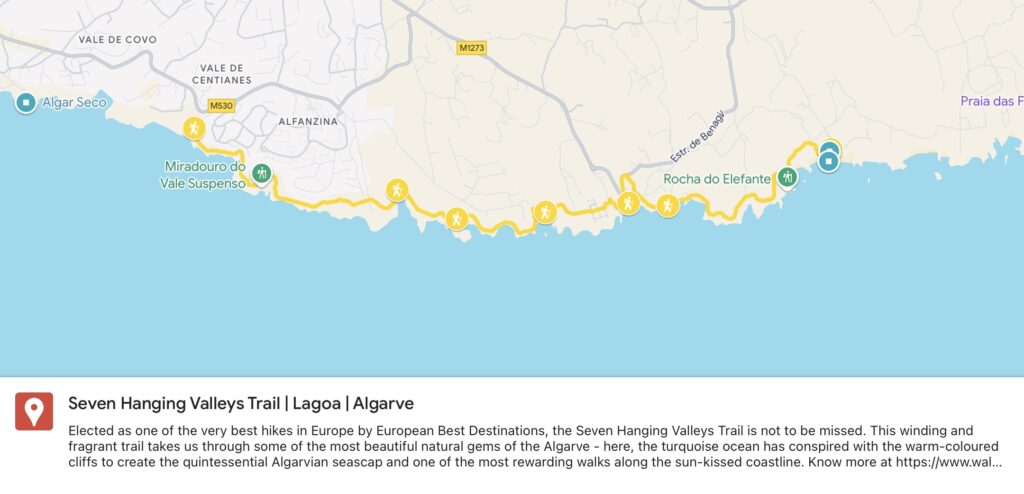

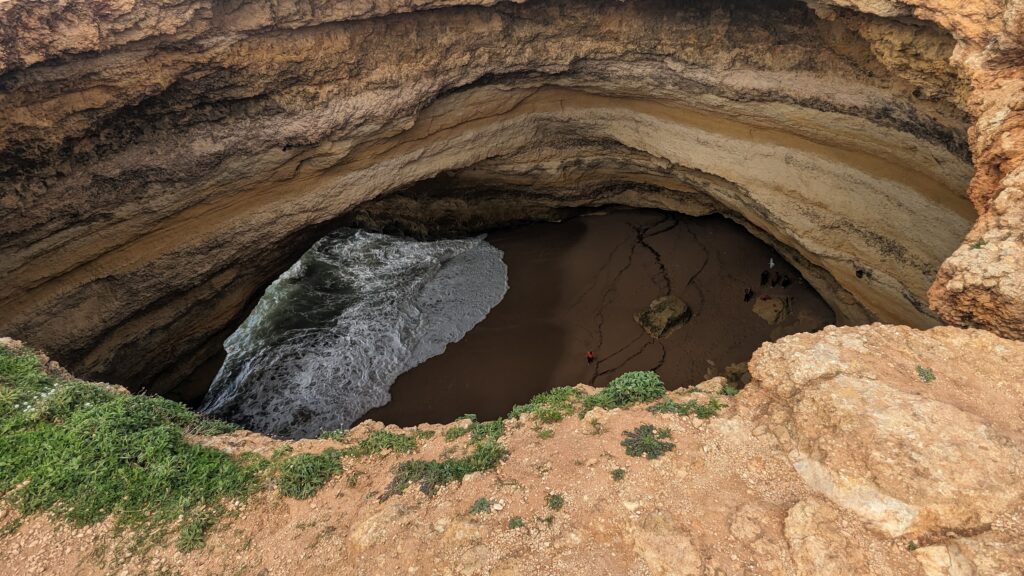
Lagos
- Fortaleza da Lagos. Also known as Forte de Nossa Senhora da Penha de França, Forte do Pau da Bandeira. Yes, it’s confusing, even on Maps. Built between 1680 and 1690, it’s closed for renovations but still great to walk around. In old town on the river.

- Enjoy the walk along Avenida dos Descobrimentos, across the pedestrian bridge to the Lagos Marina. Lots of shops, restaurants, lovely views of the waterfront.
- Levante Lagos Market runs Saturday mornings and Wednesday afternoon. They have a farmers market here, plus plenty of local products like homemade bread and bakery items. A local brewery is there on Wednesdays plus food trucks. Sometimes there is music.
On the roof of the market, looking at Lagos Marina
- Mercado de Escravos is a small museum on the history of the slave trade. €5.00 for a combination ticket to the city museum Museu de Lagos, Jose Formosinho. This is in the Church of Santo António and has some gorgeous religious artifacts and the chapel, at the end of the museum rooms, is stunning.
- Mercado Municipal de Lagos a beautiful building, with the fish market on the lower floor and the upper floor has produce and local products, lots of honey, nuts and more. There is a nice restaurant plus great views from the roof.

Boardwalks to Ponta da Piedade/google maps - Old Town, Castelo de Lagos, Arco/Porta de São Gonçalo There is a lot to see in the old town area, remnants of the walls (rebuilt after the 1755 earthquake) and some of the old gates.
- The boardwalks to Ponta da Piedade and the lighthouse are something I visit almost every week. There are beautiful views the entire length out to the point. There are two endpoints, with parking.
- Lagos has many great beaches: Praia da Batata, Praia Dona Ana, Praia dos Estudantes which offers good views of Pinhao Stone Bridge.
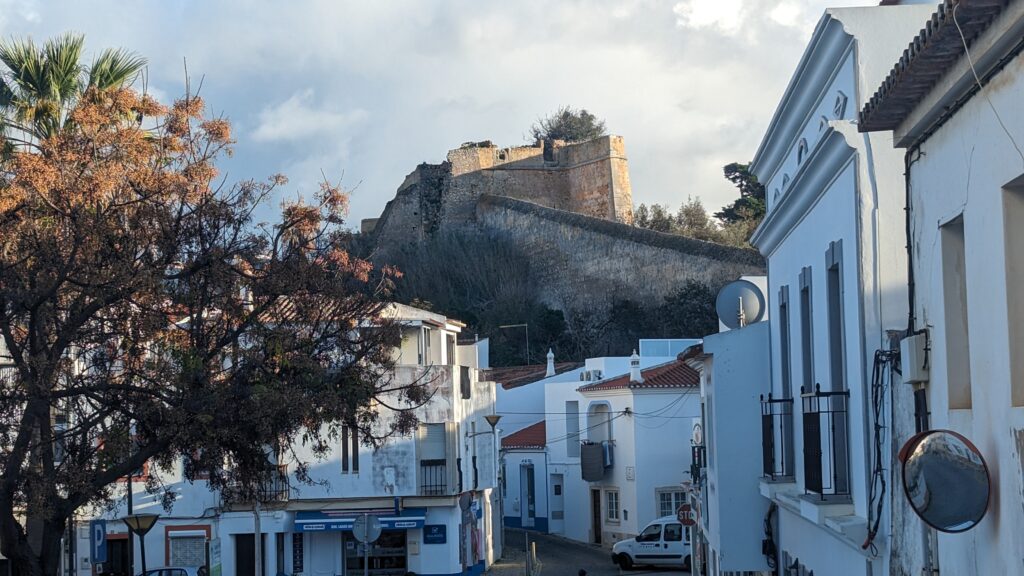
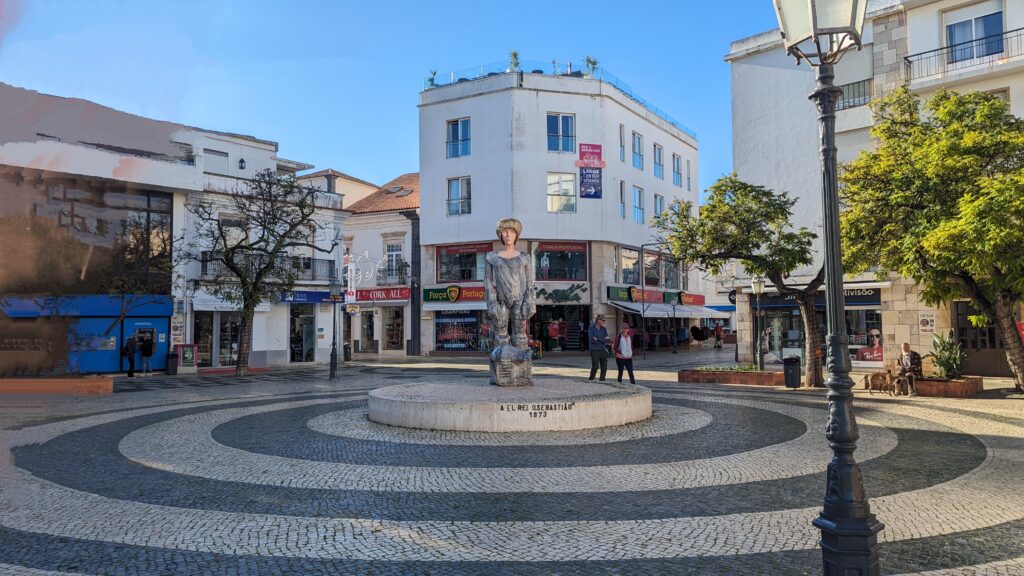
Loule
- Loule Carnaval celebrates the oldest carnaval in the country, for 118 years. I went over in 2024; there are 1000s of people enjoying floats, dancers, and bands down Avenida José da Costa Mealha.
- Loule Castle includes walls and towers left from the 13th c. Built by the Moors.
- Mercado de Loule a beautiful Moorish style building from the early 19th c. offers fruit, vegetables, other products like peri-peri oils, and several restaurants.
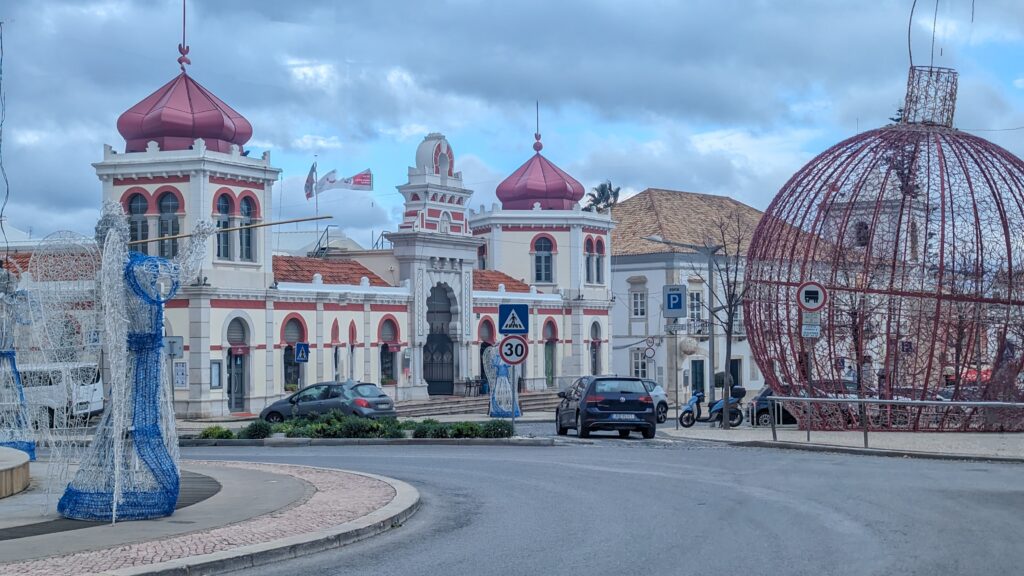
- Monterosa Olive Oil offers tours of their facility and the grounds with olive oil tastings. Very interesting! €14.00
Portimao
- Benagil boat trips. There are many, many companies offering trips of the coast out to the caves. I’ve been on two trips, different vendors with different friends, very similar, just compare prices.
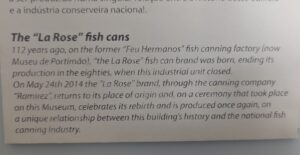
- Museu de Portimão in an old sardine cannery on the river, early history of the area, Roman exhibits, information about the sardine industry and temporary exhibits. Just €2.00, definitely worth a visit.
- Ribeirinha is a wide riverfront walkway, art and beautiful views.
- SunBoat offers a peaceful trip up the Arade River to Silves, with time in Silves to visit the castle or museum.

Sagres
- Cabo Sao Vicente is the southwestern most point of continental Europe, the views are wonderful. I drive all my visitors over here, it’s just 5 km from Sagres. There is a lighthouse on the extreme tip of the Cape. Operational in 1846, it was abandoned for a few years, and is being restored.

- On the drive back towards Sagres is the Fortaleza do Beliche. It was built in 1632 on the ruins of an old fortress. Like the lighthouse, it is closed to the public because of erosion of the cliff. But stop and enjoy the views and peek through the walls and doors.
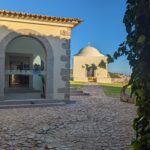
Fortazleza do Beliche - Fortaleza Sagres. I saw a review on Google Maps that “there isn’t much here” but strongly disagree. There are great views around the point, a small church, and a museum in the fort that is worth visiting. Definitely stop in the Chamber of Sound, a series of circular chambers that amplifies the sound of the tides. Prince Henry the Navigator sent his expedition to Western Africa from here. You can see all the way to Cabo Sao Vicente. The “fort” is just a large wall protecting access to the point, the other 3 sides are 60 meter cliffs. €3.00


Silves
- The Castelo de Silves is a must-see; it is one of the main Muslim forts in Portugal and the largest in the Algarve. It was the site of a Roman fortress. The Moors reinforced it, adding walls and towers in 716. There are cisterns to visit with exhibits and you can walk along most of the walls. There is a huge statue of Portuguese king Sancho I, who conquered Silves from the Muslims in 1189.

- Built on the ruins of the mosque is the Sé de Silves. Built in the 13th century, it’s a beautiful gothic cathedral. €1.50 entrance fee.
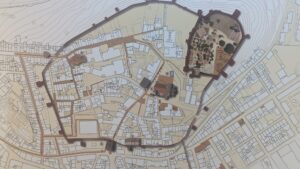 Just down the hill from the castle, and close to the city gate, Portas da Cidade de Silves, is the Museu Municipal de Arqueologia. Created in 1990, and built around the 12th-13th century Almohad cistern that was excavated in the 1980s. There are many archeological exhibits from the region, from pre-Roman, Roman, Muslim and modern times. On the second floor, you can exit to the city walls for wonderful views of the city and the Arade River. Just €2.00
Just down the hill from the castle, and close to the city gate, Portas da Cidade de Silves, is the Museu Municipal de Arqueologia. Created in 1990, and built around the 12th-13th century Almohad cistern that was excavated in the 1980s. There are many archeological exhibits from the region, from pre-Roman, Roman, Muslim and modern times. On the second floor, you can exit to the city walls for wonderful views of the city and the Arade River. Just €2.00- Like the markets in Lagos and Loule, the Mercado Municipal de Silves has produce, bread, and other local products.
- Called the Ponte Velha or Ponte Romana, the bridge is actually from the Middle Ages, between the late 14th c. to early 15th. It is now a pedestrian bridge.
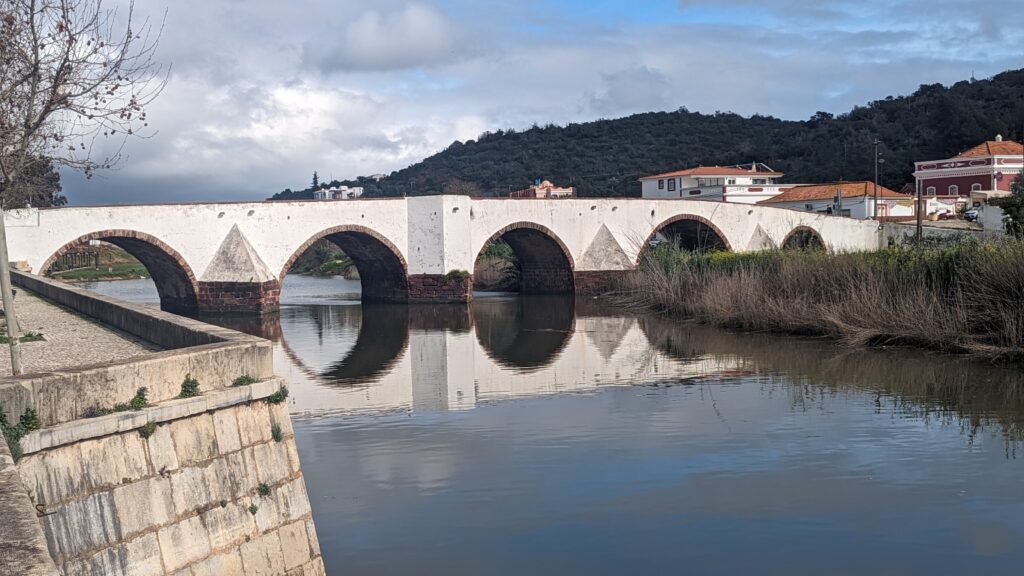
- On Praça do Município, a beautiful city square, is the Pilourinho de Silves, a monument with crown, signifying the reconquest of the town from the Moors. The Islamic Center or Centro de Interpretação do Património Islâmico de Silves is also on the square.
- Silves Orange Festival is a 3 day celebration of all things oranges. I attended the 8th annual festival, all sorts of orange products from orange chocolates, orange soap, orange beer, orange liqueur, orange cookies, and much more. A food tent with a couple vendors, music plus rides for the kids.

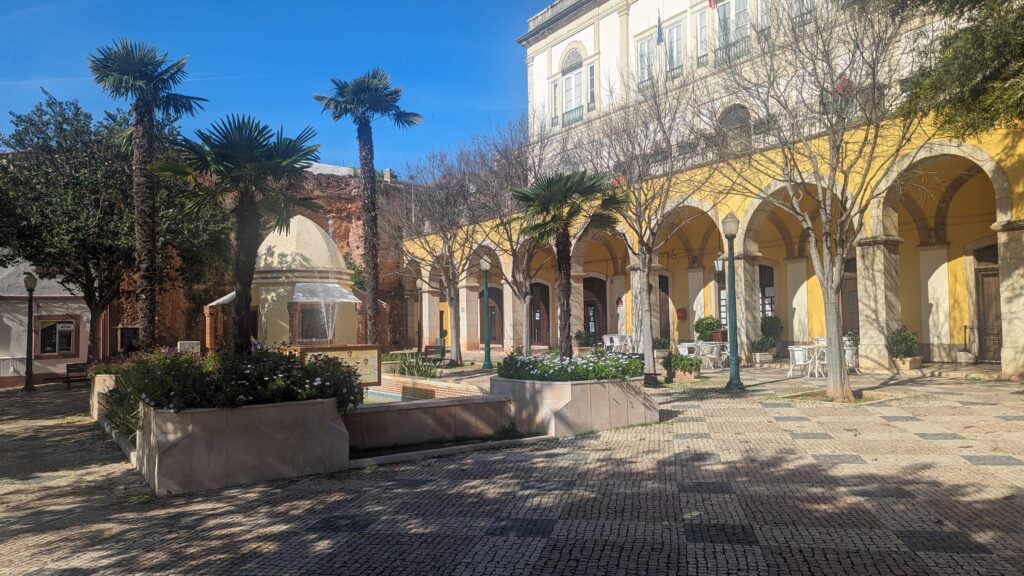
Tavira
- I enjoyed walks up and down both banks of the Gilão River, there are several bridges to cross back and forth, lovely views.
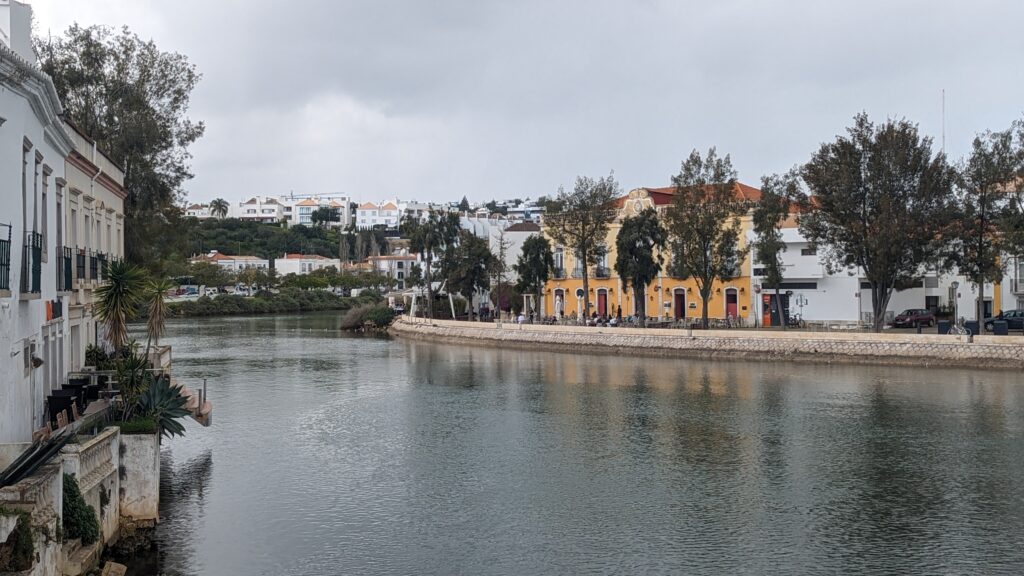
- Igreja da Misericordia was built from 1541 to 1551, embellished with baroque decoration in the 1700s. The retable surrounding the altar survived the 1755 earthquake. The blue and white tiles around the chapel were created in 1760, they are stunning. It is classified as a National Monument.
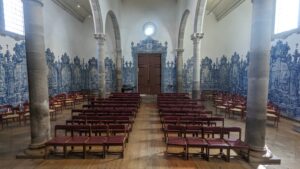
- Igrega de Santa Maria do Castelo is next to the castle. Undergoing restoration when I was there, the bells in the tower can be enjoyed from the castle. It was built in the 13th c. in gothic style. It was also damaged, then restored after the earthquake.
- Igrega de Santiago is another beautiful church in Tavira. Like Santa Maria, it is close to the castle and from the 13th century.
- Museo Islamico de Tavira and Palacio da Galeria can be visited on a shared ticket purchased at either location. Both are very good museums.
- A short drive from Tavira is the beautiful Praia do Barril and the Cemetery of Anchors, or Cemiterio das Ancoras. The anchors were not used for the boats themselves but to anchor tuna fishing nets, then hauled out and just put on the beach. We bought train tickets to get to the beach then enjoyed the walk back. It is about €2.00 one-way. It is a beautiful walk but if you’re going to the beach for the day, with bags or coolers, I am sure you’ll want round trip on the train.
- The Roman Bridge, or Ponte Romana, across the Gilão River connects Old Town and the Praça da República. Like in Silves, it is not from the Roman era. It was built in the late 16th c. on the foundations of a bridge on the old Roman road. Get a great photo from the pedestrian bridge, Ponte Velha.
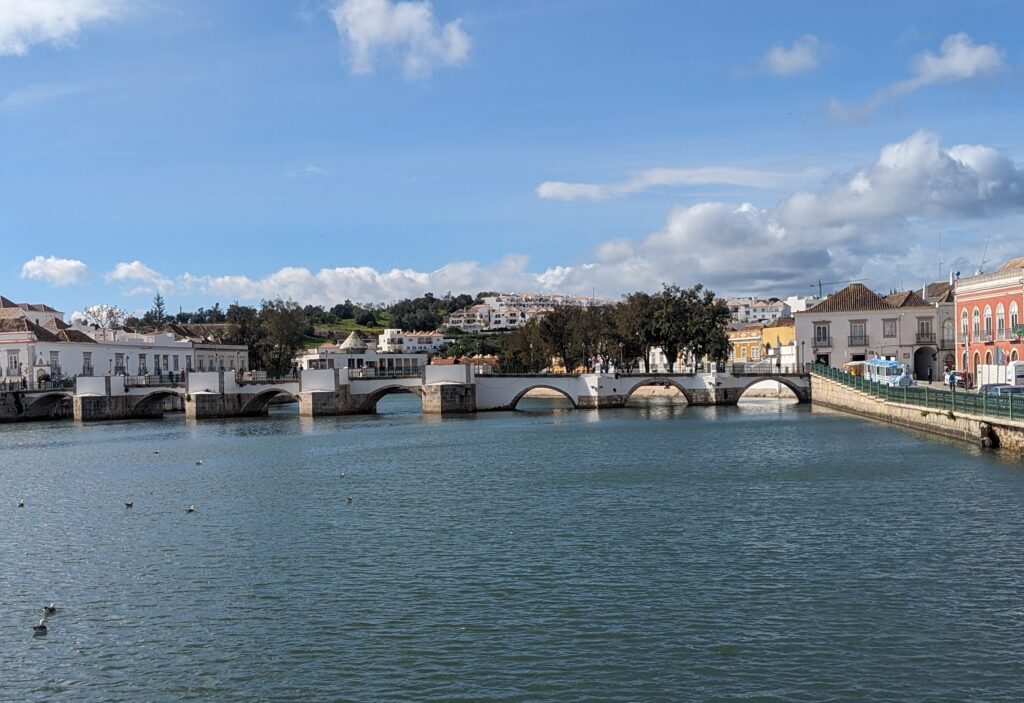
- Tavira Castle has a lovely garden inside the old walls, there are several stairs to walk up along the walls for great views of the city. The castle was built in the 8th c. by the Moors. Destroyed during the 1755 earthquake it was never rebuilt. Free.

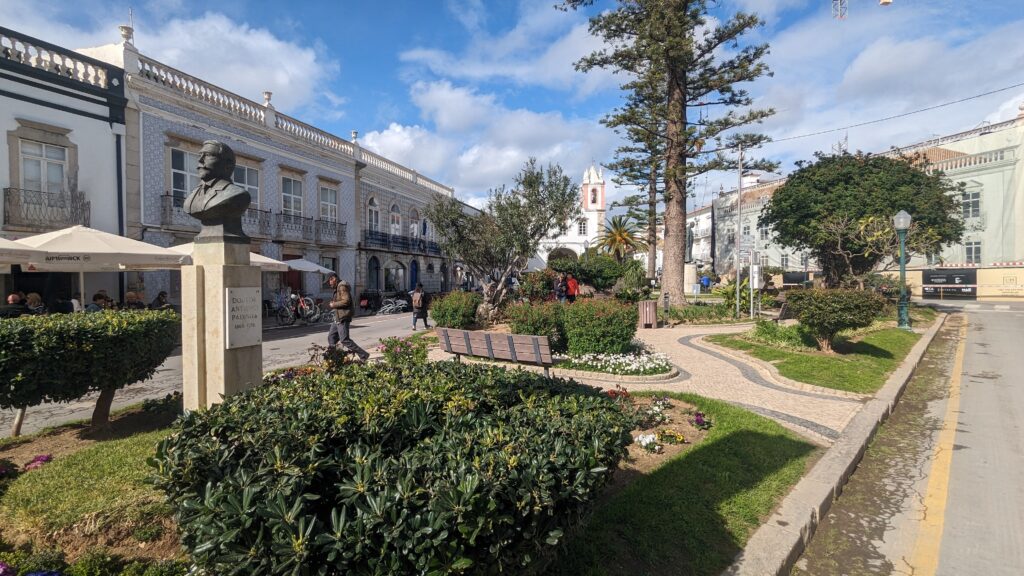

Vila do Bispo
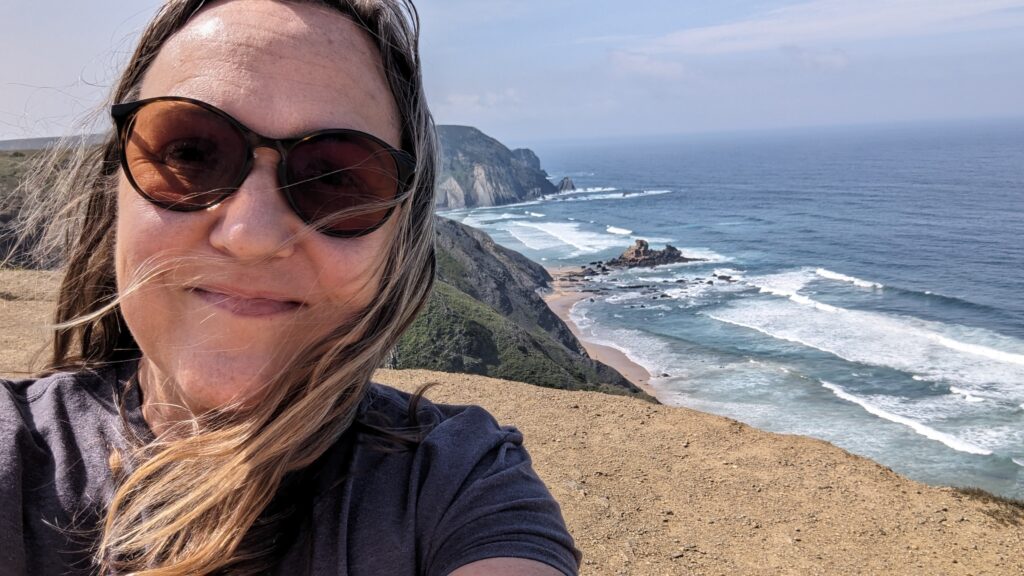
- Mirodouro Cordoama is an amazing viewpoint on the west coast.
- Museu de Vila do Bispo, Celeiro da Historia. Newly opened in January 2024, the museum is well designed and laid out. Definitely worth a visit.
- Trilho Ambiental do Castelejo, a great hiking area. I found this when coming back from the Mirodouro Cordoama viewpoint. A short but lovely 3km hike.
